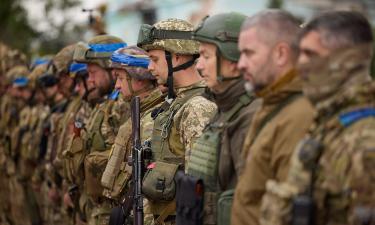Hernan Etchaleco: The Argentinean political class faces its last chance
Last weeks events in Argentina have been highlighted by main newspapers all over the world. Scenes of violence on the streets, riots and lootings were the dramatic face of the end of an economic pattern, which ruled the country for more than one decade.
In 1991, the parity between the Peso and the US Dollar was announced to reign for “sixty decades”, as former powerful Minister of Economy, Domingo Cavallo expressed enthusiastically by that time. Only ten years later, the neo – liberal policies proved to be painful and useful medicine for the structural problems of the country.
Everywhere, with the USA at the head, congratulations for the entrance of Argentina to the “New World” were heard. Internally, it meant the total opening of the economy and the privatization of State owned companies. Foreign investors made their businesses without public control and when got their earnings, just flew away. The result: Collapse of the local industry and the victory of the financial sector over the productive one. This concentrated group ruled the country all along the nineties backed by International Banks, global corporations and the consent of a political class acting on their behalf.
In the meantime, the political class spent its time on the distribution of benefits among the hegemonic sectors of the economy. Of course, it came back to them in different ways. Corruption scandals broke out, but the general bonanza made this system to obtain over 50% of votes in former President Carlos Menem’s reelection.
To finance the paradoxical increasing on State expenses, successive Governments appealed to the international credit institutions, as currency issuing was forbidden by law. Consequently, the foreign debt jumped to astronomic levels in a short period of time and austerity measures were needed to help a certain crack in public accounts.
When credit disappeared at the beginning of the new century, new Government, ruled by the well intentioned former President Fernando De la Rua faced a stalemate situation. As he could not find a way out, people, and specially the middle class, asked for the return of who created the system: Domingo Cavallo. He came back as the savior…But he failed.
On December 19th 2001, a wave of lootings shocked Argentina. Thousands of Argentineans cleaned up supermarkets, retail and wholesale shops all along the country. Fears about a possible end of President De la Rua became reality.
By that moment, Argentina was conducting a voluntary restructuring of its USD 132 billion public debt, looking for a reactivation of the internal market. Nevertheless, De la Rua failed in obtaining of full support from foreign investors to his program, and the International Monetary Fund refused to anticipate US$ 1,260 millions to help Argentina paying debt settlements. This scenario made markets go haywire and fears of default and devaluation precipitated a spectacular savings withdrawal by the end of 2001. The Government reacted immediately by setting restrictions to the extraction of funds from the banks and to international wirings to avoid a certain financial crack. The result: internal consumption slumped 60% and recession turned into depression.
For the first time in more than ten years, the middle class expressed its dislike, specially employees, retail traders and small – medium size company owners.
As the situation was turning out of control, national authorities decreed the state of siege in the country, but the measure did not have expected results. Spontaneous protests went ahead even after the state of siege was announced. Thousand of citizens gained the streets beating pots and pans, claiming for the resignation of De la Rua and his mighty powerful Economy Minister, Domingo Cavallo. Both resigned the day after.
Few days later, a Legislative Assembly promoted Peronist Governor Rodriguez Saa to presidency, but also resigned blaming his party for lack of support. Nevertheless, he found time to order default on public debt and announced guide-lines to reactivate the economy.
A new Legislative Assembly chose Eduardo Duhalde as new President. The two times Governor of Buenos Aires Province obtained support from main opposition forces to nullify the parity between the Peso and the US Dollar in an attempt to make the economy to take off. It is a risky bet. Fears of inflation threat the working and the middle classes.
No more than 25 years ago, a similar crisis would have conducted to a militarist coup d’etat. However, this is not a option, today. Despite of democracy strength, a weakened political class is facing its last chance to prove efficacy and seriousness to take Argentina out from the hole. People have lost confidence in them and crisis already swallowed one generation of politicians. The current one might follow. Behind them, only leftist forces are awaiting for their turn. The end of the story is still in the future.
Hernan Etchaleco PRAVDA.RU Argentina
Subscribe to Pravda.Ru Telegram channel, Facebook, RSS!





